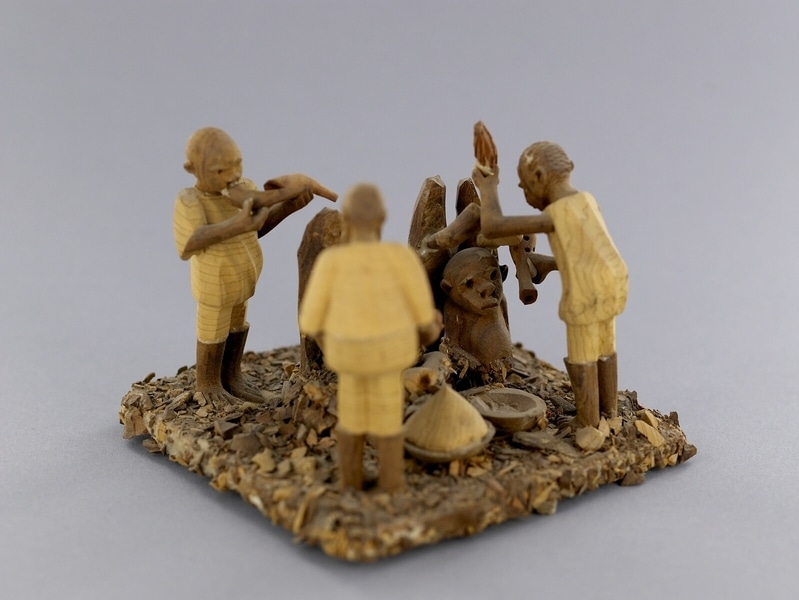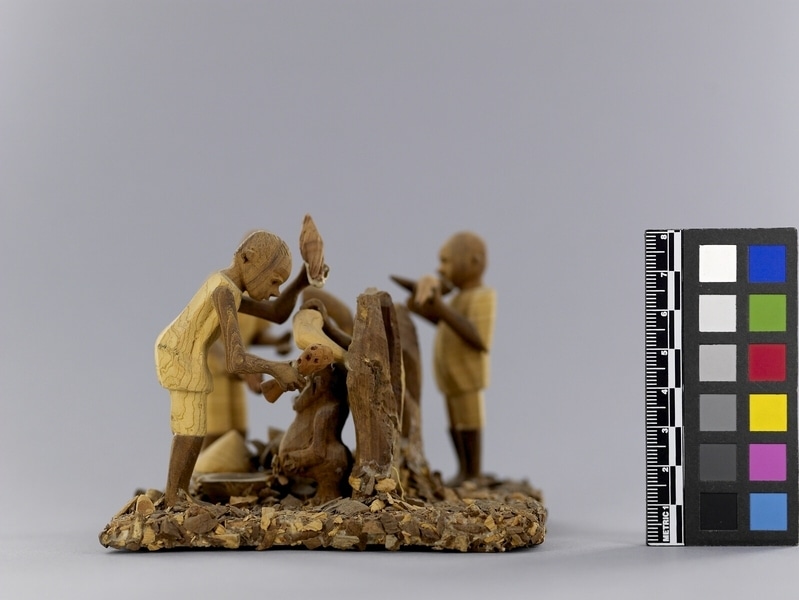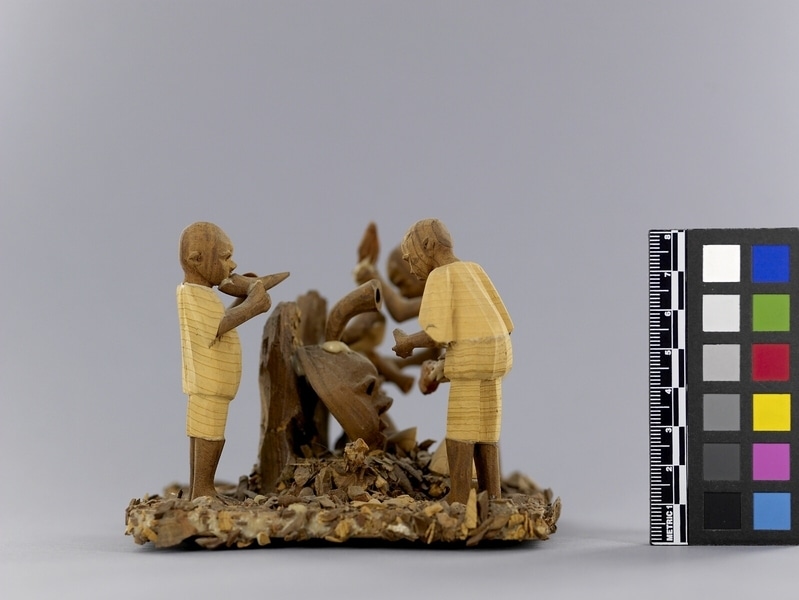Thorn Carving Item Number: Af358 from the MOA: University of British Columbia





Description
Three bareheaded figures representing people holding ritual objects in their extended hands. They are surrounding a large mask and a ritual figure, both backed by a two-pronged stump-like support. The support on the right has two horn-shaped objects inserted into it. Large mask on the left has one horn on its head and two horn-shaped objects on its base. At the base of ritual figure, there are two containers and one cone-shaped object. Clothing, contents of dish, and two horn-shaped objects are light yellow-brown. Heads, limbs, mask, ritual figures, containers, three horn-like objects, and two stumps are dark brown. One horn-like object, a pitted club, and two rolled cloth ? offerings are light red-brown. On a square base of variegated thorn bush shavings.
History Of Use
Thorn carvings are miniatures depicting scenes from Nigerian life. This type of carving began circa 1930. Thorns vary in size. They can be as large as 12.7 cm. long and 9.6 cm. wide. They are comparatively soft and easily carved. The light yellow-brown thorn and the dark brown thorn come from the Ata tree; the light red-brown thorn comes from Egun trees. The parts are glued together with viscous paste made from rice cooked with water. They are carved by men.
Cultural Context
craft; tourist art
Narrative
Represents the Ogiya ceremony (collector's notes).
Item History
- Made in Nigeria before 1972
- Collected during 1972
- Owned by Andrew Stewart and Jessie Stewart before February 8, 1980
- Received from Andrew Stewart (Donor) and Jessie Stewart (Donor) on February 8, 1980
What
- Name
- Thorn Carving
- Identification Number
- Af358
- Type of Item
- carving
- Material
- atum thorn, egun thorn, rice adhesive and wood
- Manufacturing Technique
- carved and glued
- Overall
- height 9.0 cm, width 11.3 cm, depth 11.3 cm
Who
- Culture
- Yoruba
- Previous Owner
- Andrew Stewart and Jessie Stewart
- Received from
- Andrew Stewart (Donor) and Jessie Stewart (Donor)
Where
- Holding Institution
- MOA: University of British Columbia
- Made in
- Nigeria
When
- Creation Date
- before 1972
- Collection Date
- during 1972
- Ownership Date
- before February 8, 1980
- Acquisition Date
- on February 8, 1980
Other
- Item Classes
- carvings & sculpture
- Condition
- good
- Accession Number
- 0590/0044